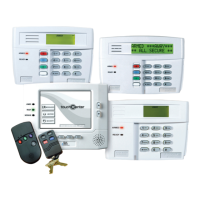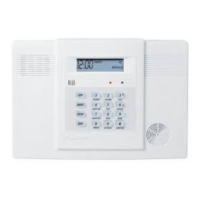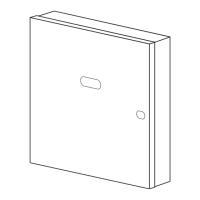POTENTIAL
SOURCES
OF
CO
IN
THE
HOME
:uel-burning
applianceslike:
portable
heater,
gas orwood
burning
fireplace,
jas kitchenrange or cooktop, gas clothes dryer.
>amaged
or insufficientventing:corrodedordisconnected waterheater
rent
pipe,
leaking
chimney
pipeor
flue,
or
cracked
heat
exchanger,
blocked
>r
clogged chimney opening.
mproper
use of appliance/device:
operating
a
barbecue
grill
or
vehicle
in
inenclosed area
(like
a garage or screened porch).
transient CO Problems: "transient" or on-again-off-again CO problems can
)e caused by outdoor conditionsand other special circumstances.
The following conditions can result in transient CO situations:
1.
Excessive
spillage
or
reverse
venting
of
fuel
appliances
causedby
outdoor
conditions
such
as:
•
Wind
direction
and/or
velocity,
including
high,
gusty
winds.
Heavy
airin
theventpipes
(cold/humid
air
with
extended
periods
between
cycles).
•
Negative
pressure
differential
resulting
from
the useof
exhaust
fans.
•
Several
appliances
running
at the sametime
competing
for
limited
fresh
air.
• Ventpipe connections
vibrating
loose fromclothes dryers,furnaces, or
water
heaters.
• Obstructions in or unconventional vent pipe designs which can amplify
the
above
situations.
2.
Extended
operation
of
unvented
fuel
burning
devices
(range,
oven,
fireplace).
3.
Temperature
inversions,
which
cantrap
exhaust
closetothe
ground.
4. Car
idling
inan openor closedattachedgarage,or neara home.
These conditions are dangerous because they can trap exhaust in your
home. Since
these
conditions can
come
and go, they are also hard to
recreate during a CO investigation.
UNDERWRITERS
LABORATORIES
INC.
UL2034
WHAT
LEVELS
OF
CO
CAUSE
AN
ALARM?
Jnderwriters Laboratories Inc. Standard UL2034requires residential CO
Marms
to sound when exposed to levels ofCO and exposure times as
described
below.
Theyare measuredin parts per
million
(ppm)
ofCOover
:ime (in minutes).
JL2034
Required
Alarm Points*:
» Ifthe
alarm
isexposedto 400ppmof
CO,
IT
MUST
ALARM
BETWEEN
4
and
15
MINUTES.
» Ifthe
alarm
is
exposed
to 150ppmof
CO,
IT
MUST
ALARM
BETWEEN
10
and
50
MINUTES.
• Ifthe
alarm
isexposedto 70 ppmofCO,
IT
MUST
ALARM
BETWEEN
60
and
240
MINUTES.
k
Approximately
10%
COHb
exposure
at
levels
of10%to
95%
Relative
Humidity (RH).
The
unit
is
designed
notto
alarm
when
exposedto a constant
level
of 30 ppm for 30 days.
IMPORTANT! s m 4 ., ^ +
CO
Alarms
are designedto
alarm
beforethereisan
immediate
life
threat.
Sinceyoucannotsee or
smell
CO,
neverassumeit'snot present.
• Anexposureto 100ppmofCOfor20
minutes
maynotaffectaverage,
healthy
adults,
butafter4
hours
the same
level
maycause headaches.
•
An
exposure
to 400ppmofCO
may
causeheadaches in
average,
healthy
adults
after
35
minutes,
but
can
cause
death
after
2
hours.
IMPORTANT!
,,'„,.,
,
ThisCO
Alarm
measures exposure to CO overtime.ItalarmsifCOlevels
are
extremely
high
ina short
period
of
time,
orifCO
levels
reach
a
certain
minimum
overa
long
period
of
time.
TheCO
Alarm
generally
soundsan
alarm
before the onset of symptoms inaverage, healthyadults.
Why
isthis
important?
Because
you
need
tobe
warned
ofa
potential
CO
problem
while
you
can
still
react
in
time.
In
many
reported
casesof
CO
exposure,
victims
may
be
aware
that
they
arenot
feeling
well,
but
become
disorientedand can no longerreact
well
enoughto exitthe
building
or get
help.
Also,
young
children
andpets
may
bethe
first
affected.
The
average
healthy
adult
might
not
feel
any
symptoms
when
the
CO
Alarm
sounds.
However,
people
with
cardiac
or
respiratory
problems,
infants,
unborn
babies,
pregnant
mothers,
or
elderly
people
canbe
more
quickly
and
severely
affected
by
CO.
If
you
experience
even
mild
symptoms
of
CO
poisoning,
consult
your
doctor
immediately!
Standards:
Underwriters
Laboratories
Inc.
Single
and
Multiple
Stationcarbon
monoxide
alarms
UL2034.
According
to
Underwriters
Laboratories
Inc.
UL2034,
Section
1-1.2:
"Carbon
monoxide
alarmscoveredbythese
requirements
are
intended
to respondto
the
presence
of
carbon
monoxide
from
sources
suchas, butnot
limited
to,
exhaust from internal-combustionengines, abnormal operationof
fuel-fired
appliances,
and
fireplaces.
CO
Alarms
are
intended
to
alarm
at
carbon
monoxide
levelsbelowthose that could cause a loss of
ability
to react to the
dangers
of
Carbon
Monoxide
exposure."
This
CO
Alarm
monitors
theairat
the
Alarm,
and is
designed
to
alarm
before
CO
levels
become
life
threatening.
This
allows
you
precious
time
to
leave
the
house
and
correct
the
problem.
This
is
only
possible
if
Alarms
are
located,
Installed,
and
maintained
as
described
in
this
manual.
Gas Detection at TypicalTemperatureand HumidityRanges: ^
The CO
Alarm
is not formulatedto detect CO levelsbelow 30 ppm
typically.
ULtested for false alarmresistance to Methane(500 ppm),Butane (300ppm),
Heptane
(500
ppm),
Ethyl
Acetate
(200
ppm),
Isopropyl
Alcohol
(200
ppm)
.and
Carbon
Dioxide
(5000
ppm).
values
measure
gas and
vapor
concentrations
in parts per
million.
Audible Alarm: 85 dB
minimum
at 10 feet (3 meters).
GENERAL
LIMITATIONS OF
CO
ALARMS
CO
Alarms
maynot be
heard.
The
alarm
horn
loudness
meets
or
exceeds
current
UL
standardsof85dBat 10feet(3
meters).
However,
IftheCO
Alarm
is installedoutside the bedroom,it maynot wake up a sound sleeper orone
whohas
recently
useddrugsor hasbeen
drinking
alcoholic
beverages.
This
is
especially
trueifthe dooris closedor
only
partly
open.
Even
personswho
are
awake
may
nothearthe
alarm
horn
ifthe
sound
is
blocked
by
distance
or
closeddoors.
Noise
from
traffic,
stereo,
radio,
television,
air
conditioner,
or
other
appliances
may
also
prevent
alert
persons
from
hearing
the
alarm
horn.
ThisCO
Alarm
is not
intended
forpeoplewhoare
hearing
impaired.
COAlarmsarenot a substitute fora smoke
alarm.
Although
fire
isa
sourceofcarbon
monoxide,
thisCO
Alarm
does notsense smokeor
fire.
This
CO
Alarm
senses COthat maybe escaping unnoticed
from
malfunctioning
furnaces,
appliances,
orother
sources.
Early
warning
of
fire
requires
the
installation
of
smoke
alarms.
COAlarmsarenot a substituteforWeinsurance.
Though
theseCO
Alarms
warn
against
increasing
CO
levels,
BRK
Brands,
Inc.
doesnot
warrant
or
imply
in
any
way
that
they
will
protect
lives
from
CO
poisoning.
Homeowners
and
renters
must
still Insure their lives.
COAlarmshave a
limited
life.
Although
the CO
Alarm
and
all
ofitsparts
havepassed
many
stringent
tests andare
designed
to beas
reliable
as
possible,
any
of
these
parts
could
fail
at
any
time.
Therefore,
you
must
test
your COAlarmweekly.
COAlarmsarenot
foolproof.
Like
all
other
electronic
devices,
CO
Alarms
have
limitations.
They
can
only
detectCOthat reachestheirsensors.
They
may
not
give
early
warning
to
rising
CO
levels
ifthe
CO
is
coming
from
a
remotepartofthe
home,
away
from
the CO
Alarm.
This CO Alarm is
intended
for residential
use.
It is
not
intended
for
use in industrialapplications where Occupational Safety and Health
Administration
(OSHA)
requirements for carbon monoxide detectors
must
be
met.
COalarmsmay notwaken all
individuals.
If
children
orothersdo not
readily
waken to the sound of the CO alarm,or ifthere are infantsor
family
members
with
mobility
limitations,
make
surethat
someone
is
assigned
toassist
them
in
the
event
of
an
emergency.
QO
Alarms
will
notwork
without
power.
This
Alarm
contains
a
sealed,
non-replaceable battery.
CO Alarms for Solar or Wind Energy
users
and battery
backup
power
systems:
AC
powered
CO
Alarms
should
only
be
operated
with
trueor pure
sinewave
inverters.
Operating
this
Alarm
with
most
battery-powered
UPS
(uninterruptible
power
supply)
products
orsquare
wave
or
"quasi
sine
wave
inverters will damage the Alarm. Ifyouare not sure about your
inverter
or
UPS
type,please
consult
with
the
manufacturer
to
verify.
This CO Alarmwillnot
sense
carbon monoxide that does not reach the
sensor. This CO
Alarm
will
onlysense CO at the sensor. CO maybe present
inother areas. Doorsor otherobstructions mayaffectthe rate at whichCO
reaches the CO
Alarm.
Forthis reason, ifbedroomdoors are
usually
closed
at
night,
we
recommend
you
install
a
CO
Alarm
in
each
bedroom
and
in
the
hallway between them.
COAlarmsmaynot sense COon anotherlevelof the home.For
example,
a CO
Alarm
on the second
level,
nearthe bedrooms, maynotsense COinthe
basement. Forthis reason, one CO
Alarm
maynot giveadequate warning.
Complete
coverage
is
recommended.
Place
CO
Alarms
oneach
level
ofthe
home.
PROBLEM.
The
light
flashes
(GREEN)
and the hornsounds
3 "chirps" every minute.
The
light
flashes
(GREEN)
and the hornsounds
5 "chirps" every minute.
CO
Alarm
goes back intoalarm4 minutesafteryou
press the Test/Silence button.
CO Alarmsounds frequently even though no high
levels of CO
are
revealed
in
an
investigation.
TROUBLESHOOTING
GUIDE
THIS
MEANS.,
MALFUNCTION SIGNAL.
Based
on its Self Test
diagnostics,
the
unit
has detecteda
malfunction.
The unit
needs
to
be
replaced.
END
OF
LIFE
SIGNAL.
CO Alarm
needs
to be replaced.
CO
levels
indicatea
potentially
dangeroussituation.
TheCO
Alarm
may
be
improperly
located.
Refer
to
"Where
to
Install
CO
Alarms;'
YOU
SHOULD...
CO Alarmsunder warranty should be returned to
manufacturerfor replacement. See
"Limited
Warranty" for details.
Immediately replace the CO Alarm.
IF
YOU
ARE
FEELING
SYMPTOMS
OF CO
POISONING,
EVACUATE
yourhome and call911or
the
Fire
Department.
If
not,
press
the
Test/Silence
buttonagainand keep ventilating yourhome.
Relocateyour
alarm.
If
frequent
alarms
continue,
have home rechecked for potential CO problems.
You
maybe
experiencing
an
intermittent
CO
problem.
If
you
have
any
questions
that
cannot
be
answered
by
reading
this
manual,
call
Consumer
Affairs
at
1-800-323-8005.
LIMITED
WARRANTY
BRK
Brands,
Inc.
("BRK")
the makerof
BRK®
brandand First
Alert*
brandproducts,
warrants
that fora periodoften years
from
the date ofpurchase,this product
will
be free
from
defects in
material
and
workmanship.
BRK,
at its
option,
will
repairor replacethis productor anycomponentofthe productfoundto be
defective
during the warranty period. Replacement
will
be made with a new or remanufactured product or component. Ifthe product is no longer available, replacement may
be
made
with a similar
product
of equal or
greater
value. This is your exclusive warranty.
This warranty is valid for the original retail purchaser from the
date
of initialretail purchase
and
is not transferable. Keep the original
sales
receipt. Proof of purchase
is required to obtain warranty performance. BRKdealers, service centers, or retail stores selling BRKproducts do not have the right to alter, modifyor any way
change the terms and conditions of this warranty.
This
warranty
doesnot
cover
normal
wear
of
parts
or
damage
resulting
from
anyofthe
following:
negligent
useor
misuse
ofthe
product,
useon
improper
voltage
or
current,
use
contrary
tothe
operating
instructions,
disassembly,
repair
or
alteration
by
anyone
otherthan
BRK
oran
authorized
service
center.
Further,
the
warranty
does notcoveracts ofGod,such as
fire,
flood,
hurricanes
and tornadoesor anybatteriesthat are
included
with
this
unit.
For your records,
please
record:
Date
Purchased:
Where
Purchased:.
Date Installed: /
.Month/Year
First
Alert®
isa
registered
trademark
ofthe
First
Alert
Trust.
5
How
to
Obtain Warranty Service
?3>AM
tolSoPM
r^^,i^X^M^^^(^r^fT,n
°"£-t0
0btaln
""""P
•"**
«»«•*
*•
Consumer
Affa»s
Division
at
1-800-323-9005,
calling
25
Spur
Driw
!l
Paso/fx
799061*
V 9 ^
T°
aSS'St'"
Sem"9
y0U-
please
have
the
model
number
and
date
of
Purchase
available
when
8hWoc^
-Q*
"—"M
waste.
Please
recycle
where
facilKies
exist.
The
Alarm
should
be
deactivated
before
disposal.
See
page
3
You
can
also
return
your
Alarm
to
us
for
disposal.
For
return
address
see
above.
Please
Include
a
note
confirming
the
product
is
being
returned
for
disposal.
Replace alarm 10 years after installation. Please write
the
date in
the
space
provided:
The
alarm
will
also
provide
an
audible
End-of-Life
Signal
approximately
10yearsafter
installation
to
remind
youto
replace
the unit
The
End-of-Life
Signal
canbe silenced forupto 7days.
Donot deactivate
alarm
until
youhavea
replacement.
^Month/Year
Printedin Mexico
M08-0483-001
P 03/14
6

